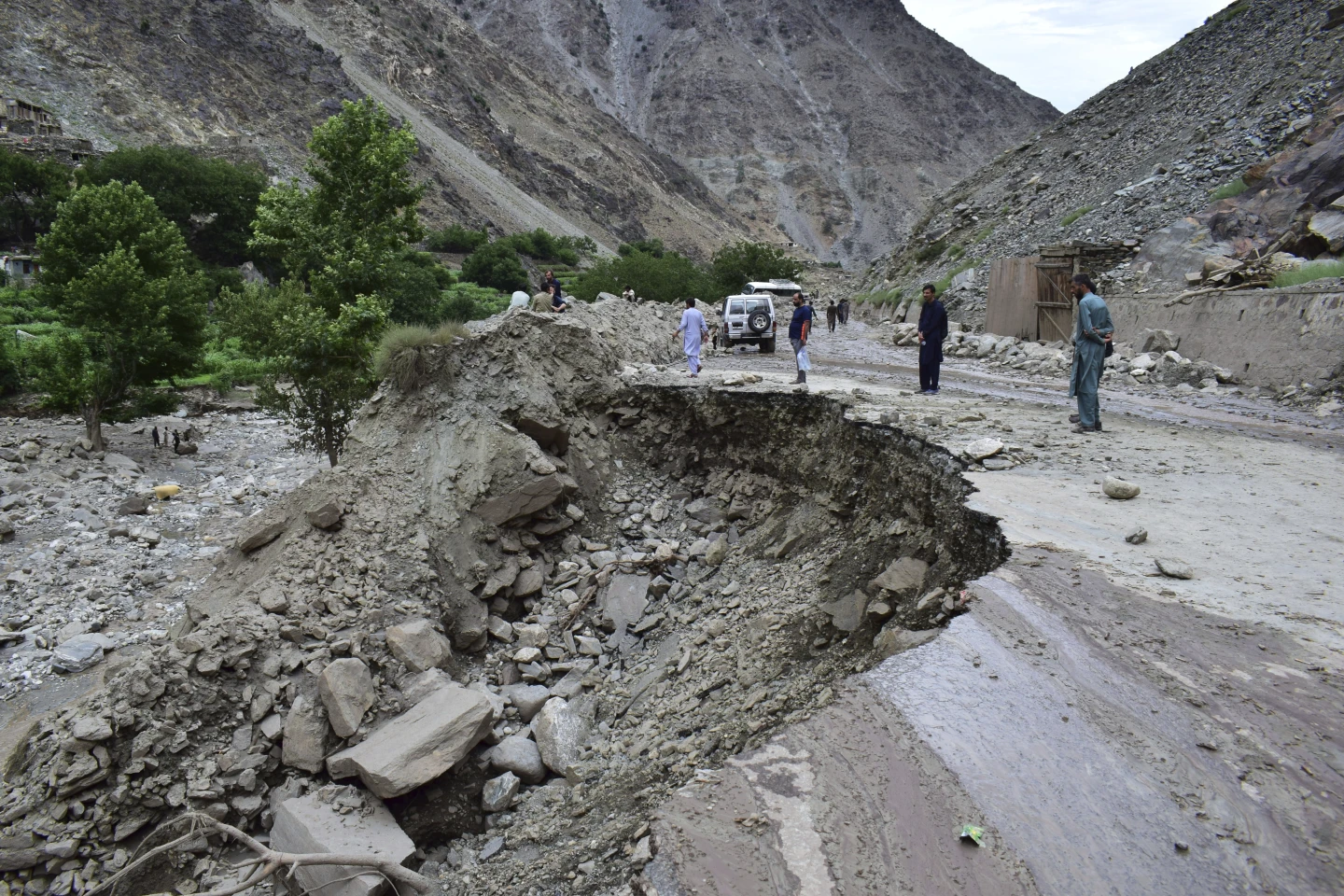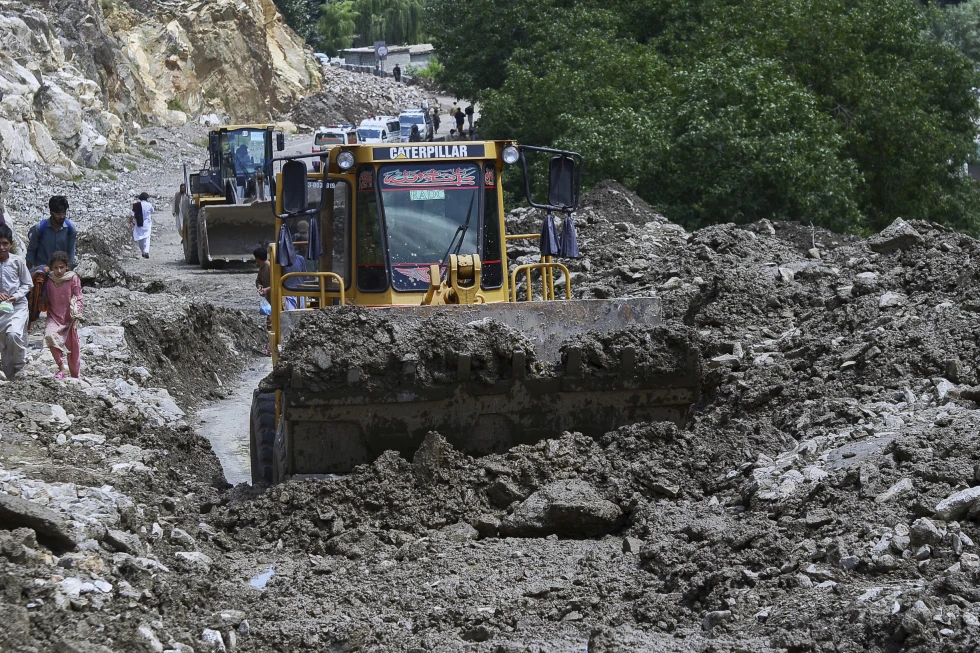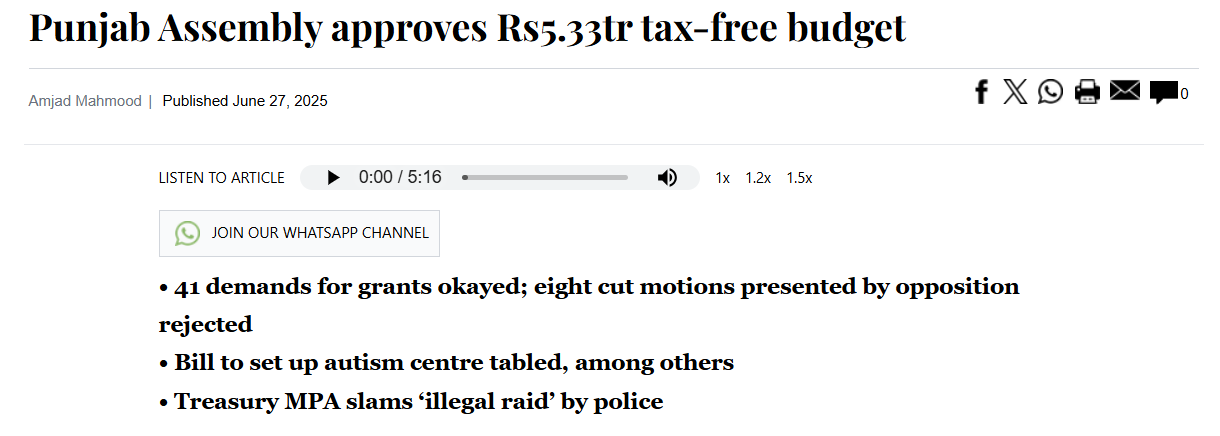Between July 20 and July 26, 2025, Pakistan continued to reel under the impact of relentless monsoon rains, which triggered deadly flash floods and landslides across its northern mountainous regions, particularly near Chilas. On July 22, a cloudburst-induced landslide swept away vehicles carrying tourists, killing at least three and leaving 15 others missing, as rescue crews, including army helicopters and heavy machinery, searched through mud and rubble along the highway. Since June 26, extreme downpours have claimed over 225 lives and injured more than 500 people nationwide, with rising alarm over escalating climate risks in the region. As of July 25, the search expanded to find 12 missing tourists believed buried beneath boulders, as engineers and military personnel raced to reopen the damaged highway connecting Pakistan and China. By July 26, officials issued alerts for possible glacier lake outburst floods in the northwest, including Khyber Pakhtunkhwa, prompting the evacuation of over 500 tourists from Naran and Fairy Meadows, and ongoing recovery operations along the affected Babusar Pass.

Image Credit: AP News
Scenes described in coverage—vehicles buried, roads cracked, debris-strewn highways, and bulldozers clearing mud-choked routes—mirror horrific flash floods that displaced thousands, destroyed bridges and homes, and stranded hundreds of holidaymakers.

Image Credit: AP News
Pakistan is no stranger to natural disasters. Monsoon rains hit hard every year, often flooding roads, washing away homes, and taking lives. In July 2025, heavy rain triggered flash floods and landslides in the north, near Chilas. Bulldozers were clearing mud and broken rocks from the highway. The rising water swept away twelve tourists. Rescuers used machines to search for them. The scenes were heartbreaking. Roads cracked, bridges broke, and homes disappeared under layers of mud.

Image Credit: AP News

Image Credit: AP News
The media repeatedly showed these images. They painted Pakistan as a place of crisis, disaster, and failure. But is that the whole truth?
You May Like To Read: BBC’s Narrative on Baluchistan and Salman Akram Raja
Real Problems, Real Response
The flood is real. But so is the response. The government sent rescue teams. Army engineers worked day and night. Helicopters lifted stranded families from danger. Relief camps gave food, water, and medicine. Disaster management units in Khyber Pakhtunkhwa and Gilgit-Baltistan were already active after alerts from the weather office. The state was not sleeping—it was responding.
But these parts didn’t make bold headlines. Instead, AP News focused on fear, chaos, and misery.
What the AP News Leaves Out?
In the last few months, Pakistan has taken significant steps. But AP News hardly noticed.
The economy grew by 2.7% this year. Inflation fell to 4.6%, its lowest level in two years. The current account showed a $1.9 billion surplus. These are major wins for a developing nation recovering from global inflation and political instability, as its credit rating was upgraded by S&P Global to ‘B-‘ with a stable outlook. This signals trust from international markets.
The country joined a select group of nations producing over 25% of their electricity from solar energy. Solar panels now power homes, businesses, and farms across Punjab and Sindh. These are success stories. Yet, the same outlets that rush to publish tragedy fail to cover these wins.
Punjab passed a tax-free budget of Rs 5.33 trillion for the fiscal year 2025–2026. It includes Rs 740 billion in surplus, with no new taxes. The budget increases funding for education, healthcare, sanitation, and job creation.

Image Credit: DAWN
The Uraan Pakistan initiative, a 5-year plan launched by the Planning Commission, lays out digital and industrial reforms, focusing on youth skills and public-private investment. Sindh’s School Program now educates over 25,000 children in STEM subjects, especially in low-income areas.
Meanwhile, Suthra Punjab, a mega sanitation project, is cleaning streets using over 21,000 GPS-tracked machines.
Aren’t promises. These are actions already in place.
Terrorism and Security Gains
Pakistan continues to battle militancy. In 2024 alone, security forces conducted 59,000 intelligence-based operations, killing 925 terrorists. The National Counter Terrorism Authority (NACTA) has stepped up surveillance, blocking extremist funding and digital accounts. In July 2025, Pakistan urged global tech platforms to take down pages run by banned groups.
Yet, the media skips over these victories. They have high hopes for Pakistan to make the region safer?
Celebrating National Spirit
Not all news is grim.
Pakistan also hosted youth tech fairs, literary festivals, and a successful Green Jobs Expo that placed over 10,000 graduates in clean energy jobs. However, none of these stories were picked up by the wire services.
Pakistan became the first Muslim country to eliminate trachoma, a significant health breakthrough confirmed by the WHO.)
These wins tell us one thing: Pakistan is not failing—it is moving forward, even if we don’t want to see it.
You May Like To Read: How CNN Media Ignores Pakistan’s Progress?
The Media Problem
When international newsrooms like AP News only highlight natural disasters, court rulings, or militant attacks, they miss the bigger picture. Yes, the state has problems. But it is not absent. It is active.
Selective reporting builds a broken story. It shows sadness, not strength. It hides recovery, reform, and resolution. This affects how investors, tourists, and even citizens view their own country.
When only the crisis is covered, hope is lost. Media must balance truth with fairness. They owe it to the people they report on.
What Pakistan Deserves?
Pakistan is a young nation, full of energy and talent. Its youth make up over 64% of the population. They deserve to see themselves in the news—not just as victims, but as builders of a better future.
Journalism must show both sides. The flood and the rescue. The struggle and the recovery. The damage and the healing.
The state is not perfect. But it is present. It is working, reforming, building, and pushing through challenges. It deserves credit, not just blame.
When the world views Pakistan through a single lens, it sees only one side. And that side is not the whole truth.
Floods, landslides, and missing tourists are real. But so are helicopters, bulldozers, and rescue workers. So are clean budgets, growing exports, rising solar power, and safer cities.
The state has stepped up. It acts in crisis, and it plans for the future. Yet, the news often tells only half the story. Pakistan is not only about what it is—it is also about what rises. Roads crack, but they are repaired. People suffer, but they are saved. What breaks can also heal.
The media must tell the whole story—the whole truth, because behind every facade is a hand rebuilding. And that hand deserves to be seen.






